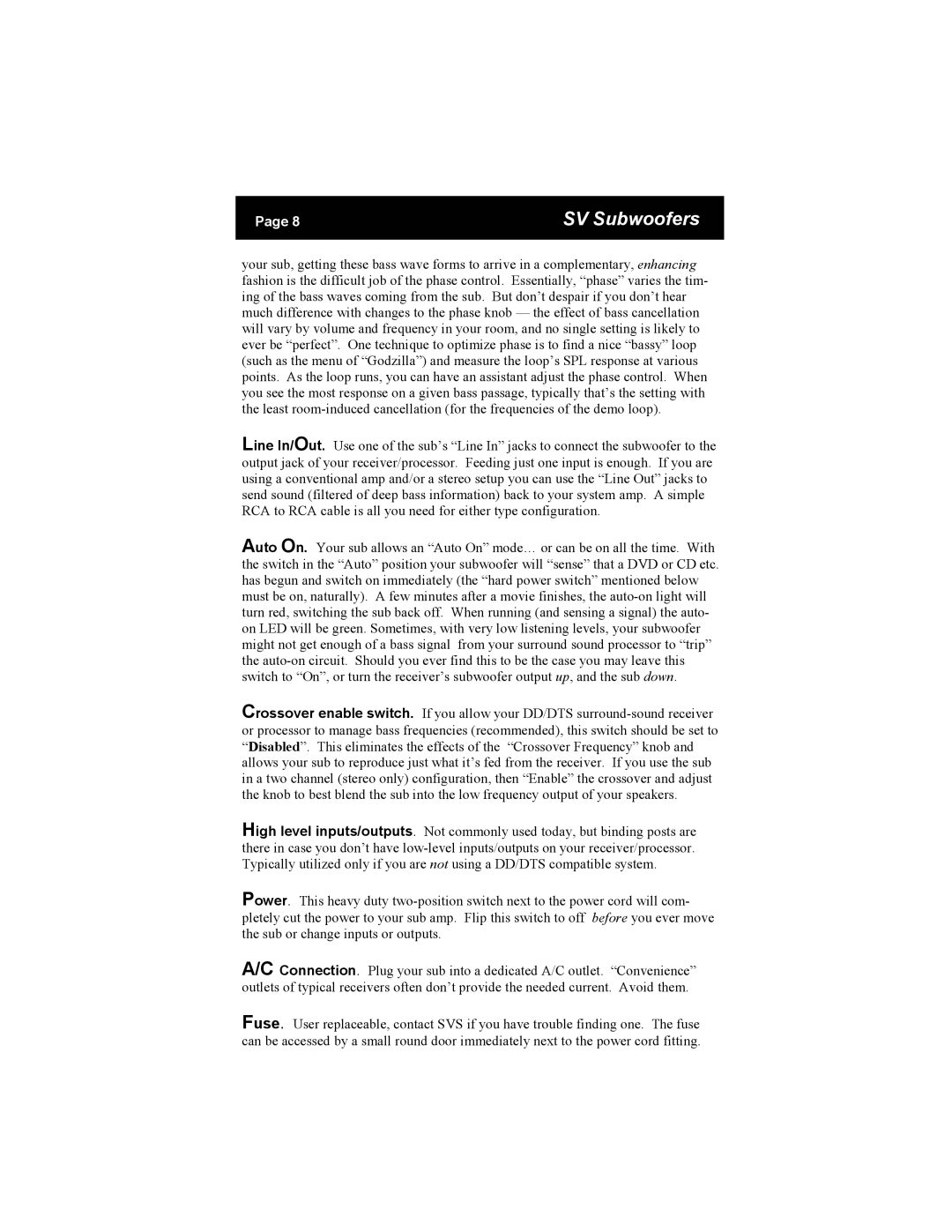PB2-ISD specifications
The SV Sound PB2-ISD is a high-performance subwoofer that exemplifies the brand's commitment to delivering exceptional audio quality. Known for its powerful low-frequency output and advanced technology, the PB2-ISD is designed for audiophiles and home theater enthusiasts seeking an immersive audio experience.One of the standout features of the PB2-ISD is its dual 12-inch drivers, which are engineered to produce deep and impactful bass. These drivers utilize a high-excursion design, allowing them to move more air and generate a powerful sound without distortion. The subwoofer is equipped with a robust amplifier, providing a significant amount of power to drive these drivers effectively. This ensures that even at high volumes, the bass remains clear and precise, making it ideal for both music and movie playback.
In terms of design, the PB2-ISD boasts a sleek and modern aesthetic, featuring a durable cabinet construction designed to minimize unwanted vibrations. The enclosure is built with high-quality materials, allowing for enhanced sound quality and longevity. With a front-firing configuration, the PB2-ISD can be easily integrated into any room layout, delivering optimal performance regardless of placement.
The PB2-ISD also incorporates advanced technologies such as variable phase adjustment and low-pass crossover control. These features enable users to customize the subwoofer's performance to match their specific audio environment. The phase adjustment allows for better integration with main speakers, enhancing the overall coherence of the soundstage. Meanwhile, the low-pass crossover control ensures that the subwoofer reproduces low frequencies without overlapping excessively with higher frequencies from the main speakers.
Additionally, the subwoofer includes a range of connectivity options, making it versatile for various audio setups. It can easily connect to receivers or processors, accommodating multiple formats and configurations.
Overall, the SV Sound PB2-ISD stands out as an impressive subwoofer designed to deliver strong, accurate bass, advanced adjustability, and elegant aesthetics, making it an excellent choice for anyone looking to elevate their audio experience. Whether for movies, music, or gaming, the PB2-ISD promises to enrich every home entertainment setup with its powerful performance.
